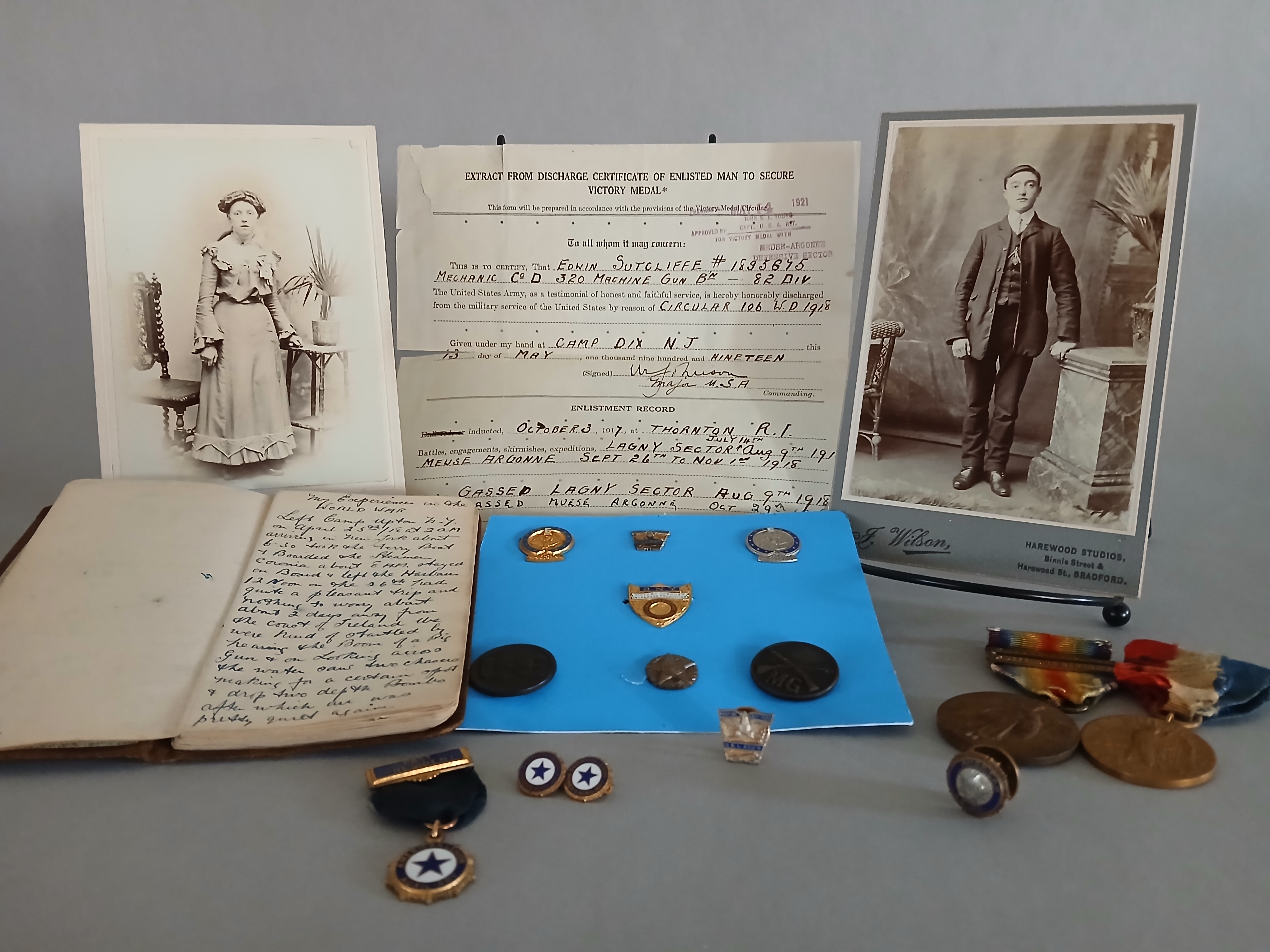
By Cathi Taylor, ALA National Headquarters Archivist
Have you ever heard a little voice in your head? You know, the voice that tells you to do something you really don’t want to do? The utterance that provokes you to check on your child who has been rather quiet for far too long? Yes, that one. Whether you refer to it as your inner voice or intuition, it’s that thing that author Louise Smith says it “knows what to do. The trick is getting your head to shut up so you can hear.”
The day started like any other workday except for one thing — that voice. While responding to emails, a relentless whispering of “Go to eBay” could be heard. Over and over, it played in my head until I finally surrendered. I opened the website, typed “American Legion Auxiliary” in the search box, and scrolled through the results. Most were items seen in previous searches — jewelry, plates, banners, etc. I was just about to end the hunt when two official Auxiliary emblem pins caught my attention.
 Normally, these items don’t pique my interest as they’re a dime a dozen on eBay. But, upon closer examination, I realized these were distinctive, outdated, and obsolete. Why? Because there were four words around the star, not three. Instead of “American Legion Auxiliary”, they read, “American Legion Women’s Auxiliary,” the temporary name chosen by The American Legion in 1920, until such time when Auxiliary delegates would meet in convention and determine this new organization’s permanent name and destiny.
Normally, these items don’t pique my interest as they’re a dime a dozen on eBay. But, upon closer examination, I realized these were distinctive, outdated, and obsolete. Why? Because there were four words around the star, not three. Instead of “American Legion Auxiliary”, they read, “American Legion Women’s Auxiliary,” the temporary name chosen by The American Legion in 1920, until such time when Auxiliary delegates would meet in convention and determine this new organization’s permanent name and destiny.
I clicked on the listing and saw the most unexpected words in the item description section. It read, “family heirlooms.” I admit it. I took the bait, messaged the seller, Mark Dobson, to learn more. It couldn’t be helped. Curiosity got the better of me.
As it turned out, the pins belonged to his grandmother’s sister, Alice Maud (Crowther) Sutcliffe. Family heirlooms indeed! With a little research on both our parts, a story emerged.
Alice and her future husband, Edwin Sutcliffe, were born in Bradford, England, in the same year, 1888. They married in early 1913, and soon thereafter emigrated to America, arriving in Boston, Mass., on April 18, 1913. The predetermined destination was Johnston, R.I., where Alice’s older sister and brother-in-law resided. And it was there, in 1917, when Edwin registered for the draft.
By the time Company D, 320th Machine Gun Battalion, 163rd Brigade, 32nd Division sailed for England, the Sutcliffes had moved to Uxbridge, Mass. It was now April 1918. Three weeks after departing New York City, Edwin’s company found itself in France. Though gassed twice during his service — once in the Lagny Sector and again in Meuse Argonne — Edwin managed to survive the war and returned home, being discharged on May 18, 1919. He picked up where he left off, as a house painter and decorator. But at some point — most likely after the Great Depression hit — Edwin began a career at the Boston Naval Yard building the ships that would be used during World War II.
It isn’t known exactly when the Sutcliffes joined The American Legion Family; however, a Feb. 6, 1923, newspaper article reveals officer installations for both — Edwin as the historian for Charles A. Rice Post 33 and Alice as the unit president. Edwin also held membership in the Masons at the Solomon’s Temple Lodge in Uxbridge, Mass., from 1922 until his death in 1946.
It’s quite a story, but it wasn’t over yet because, unbeknownst to me, Dobson was actually wanting to find a new home for these pins. The Sutcliffes had no children and so when Alice passed, these pins went to her younger sister Evelyn, Dobson’s grandmother. And now, a new home was found. So, he enfolded them in Christmas wrapping paper and gifted them to the Auxiliary. Yes, gifted, as in donation. And that wasn’t all that was gifted.
Through Dobson’s generosity, the Auxiliary National Headquarters is now the proud caretaker of the Sutcliffe collection, which includes Alice’s Auxiliary pins, Edwin’s war medals and military pins, WWI victory medal with certificate, Legion membership tack, and Edwin’s diary documenting his experiences during that year he was away from Alice.
 But what bonds these items together — what gives life and breath to this collection —are two pieces I found at the bottom of the box: a photo of Alice and a photo of Edwin.
But what bonds these items together — what gives life and breath to this collection —are two pieces I found at the bottom of the box: a photo of Alice and a photo of Edwin.
It is a valuable and opulent gift to the Auxiliary. While these two members never held a national office, they tell a story of the Legion Family’s beginnings at the grassroots level. They remind us of those who served, whether on the mainland or overseas, or those on the homefront. These are the shoulders on which we stand, for without them, the Legion Family wouldn’t exist today.
Looking back, I have serious doubts that it was my voice, my intuition, I heard that day. It was Alice and Edwin, trying to find a way to make Dobson’s desire to come true. Thank goodness I listened.
ALA Digital Archive Collection
To learn more about the history of the American Legion Auxiliary, please visit our digital archive collection at https://alaforveterans.pastperfectonline.com.